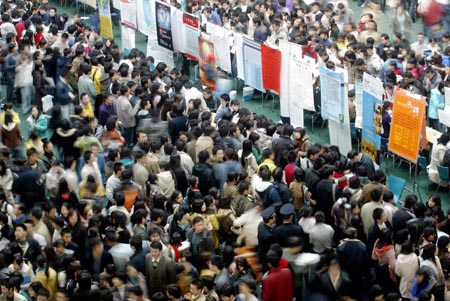How to deal with the future labor shortage?
By Cai Fang (China Daily)Updated: 2007-03-09 10:46
The author Cai Fang is director of the Institute of Population and Labor Economics of the Chinese Academy of Social Sciences
The current labor shortage spreading from the coastal areas across the country signifies the coming of the Lewisian Turning Point in China's economic development. China's oversupply of labor is on its way to becoming a thing of the past.
|
A job fair opened on December 3, 2006 in China Institute of Metrology, Hangzhou, provincial capital of East China's Zhejiang Province, attracted more than 30,000 this year's graduates. [newsphoto] |
Economist Arthur Lewis was the first to define dualistic economic development; hence, the concept of the change from an unlimited supply of labor to a shortage is called the Lewisian Turning Point.
China's fast economic growth took place under these dualistic economic conditions with the country's policies of reform and opening-up to the outside world. During this period, the scale of the working-age population was large and its percentage kept rising.
Research shows that every percentage point drop in the dependency rate (the
ratio of those under 16 and above 65 compared with the working population) will
bring a 0.115-percentage increase in the per capita gross domestic product (GDP). About 27 percent of the per capita GDP growth in China
can be attributed to the decease of the dependency rate in the reform period.
But according to projections on population age structure, the dependency rate
will begin to increase in 2013 as the aging of the population speeds up.
Similarly, every increase in the dependency rate will cut the per capita GDP
growth by 0.115 percent.
| 1 | 2 |  |
(For more biz stories, please visit Industry Updates)

